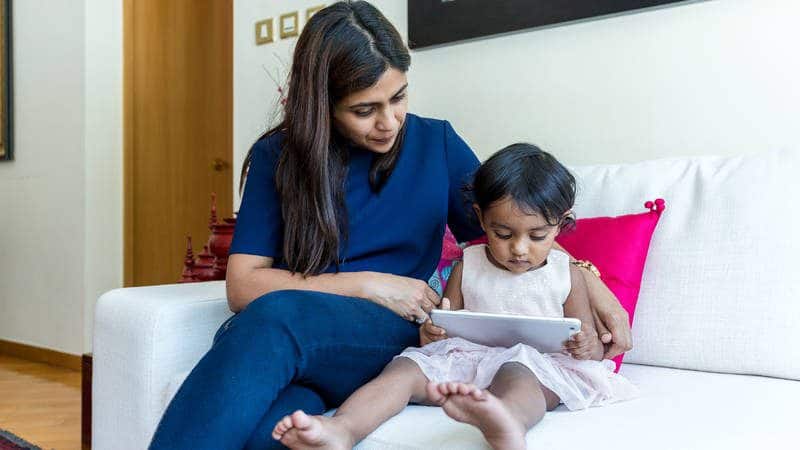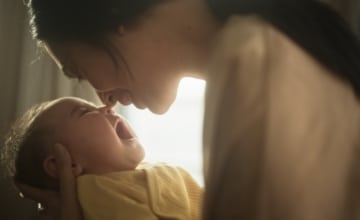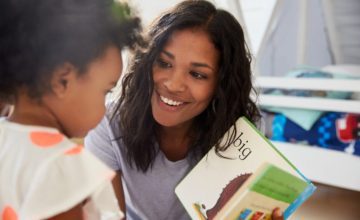Early language and literacy (reading and writing) development begins in the first three years of life and is closely linked to a child’s earliest experiences with books and stories.
The interactions that young children have with literacy materials (books, paper, crayons) and with the adults in their lives are the building blocks for language, reading, and writing development. This relatively new understanding of early literacy development complements the current research supporting the critical role of early experiences in shaping brain development.
Early literacy does not mean early reading
Our current understanding of early language and literacy development has provided new ways of helping children learn to talk, read, and write. However, it does not advocate “the teaching of reading” to younger and younger children. Formal instruction that pushes infants and toddlers to achieve adult models of literacy (i.e., the actual reading and writing of words) is not developmentally appropriate.
Early literacy theory emphasizes the more natural unfolding of skills through the enjoyment of books, the importance of positive interactions between young children and adults, and the critical role of literacy-rich experiences. Formal instruction to require young children who are not developmentally ready to read is counterproductive and potentially damaging to children, who may begin to associate reading and books with failure.
What can early literacy look like:
- Book Handling Behaviors: Behaviors related to a child’s physical manipulation or handling of books, such as page turning and chewing.
- Looking and Recognizing: Behaviors related to how children pay attention to and interact with pictures in books, such as gazing at pictures or laughing at a favorite picture.
- Behaviors that show recognition of and a beginning understanding of pictures in books, such as pointing to pictures of familiar objects.
- Picture and Story Comprehension: Behaviors that show a child’s understanding of pictures and events in a book, such as imitating an action seen in a picture or talking about the events in a story.
- Story-Reading Behaviors: Behaviors that include children’s verbal interactions with books and their increasing understanding of print in books, such as babbling in imitation of reading or running fingers along printed words.




